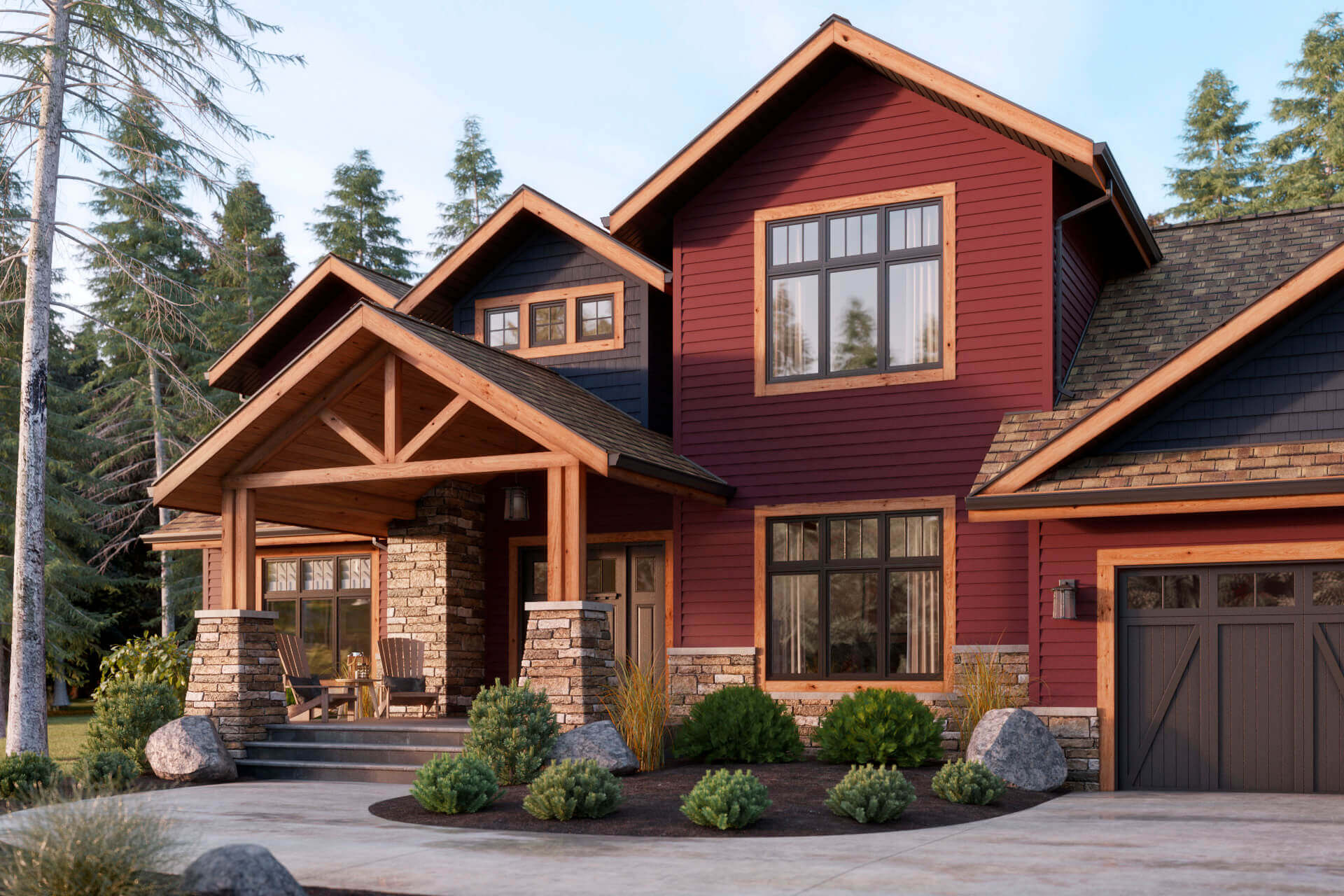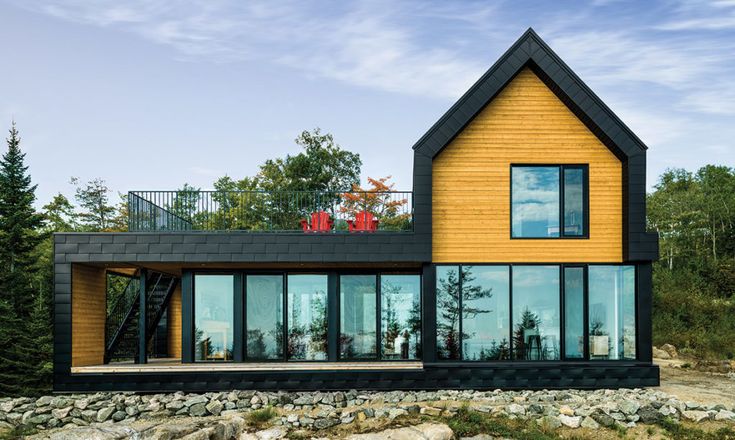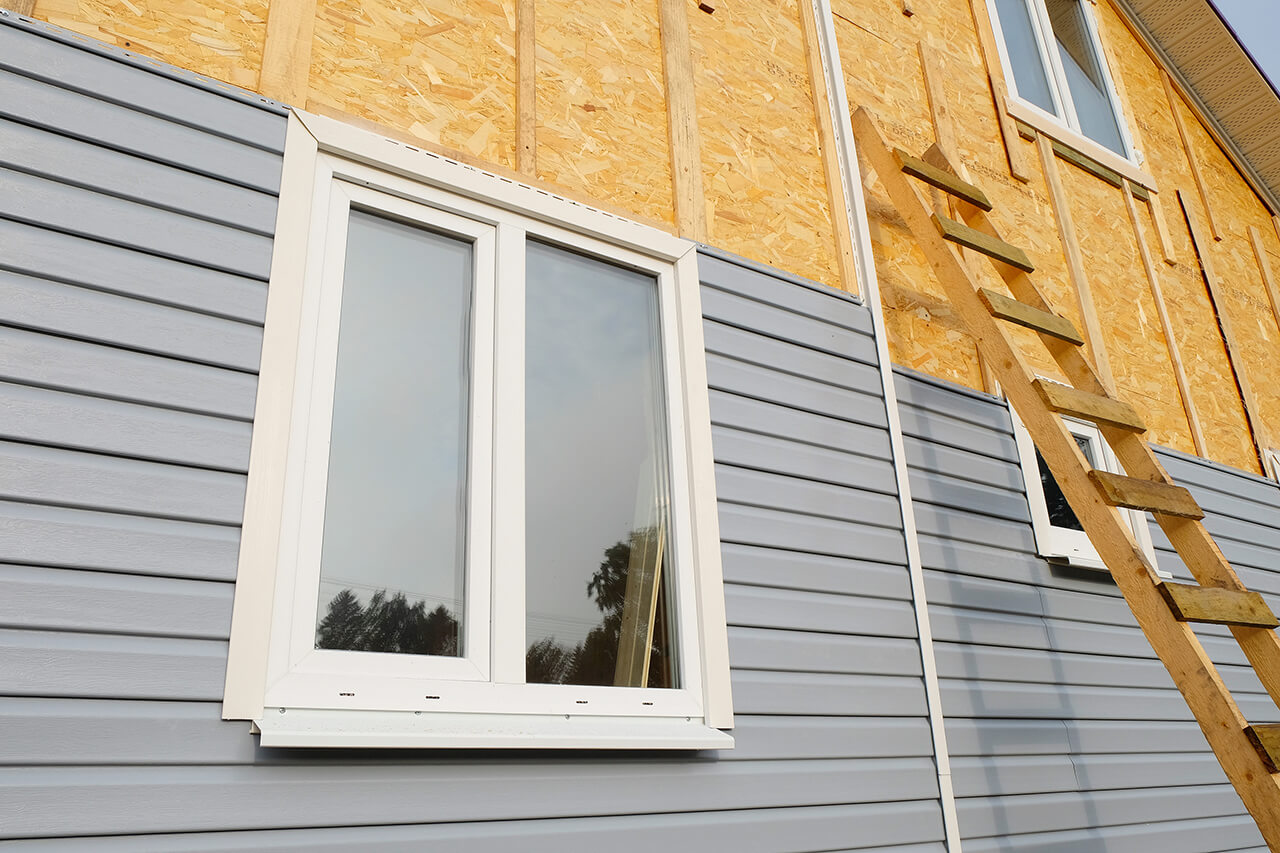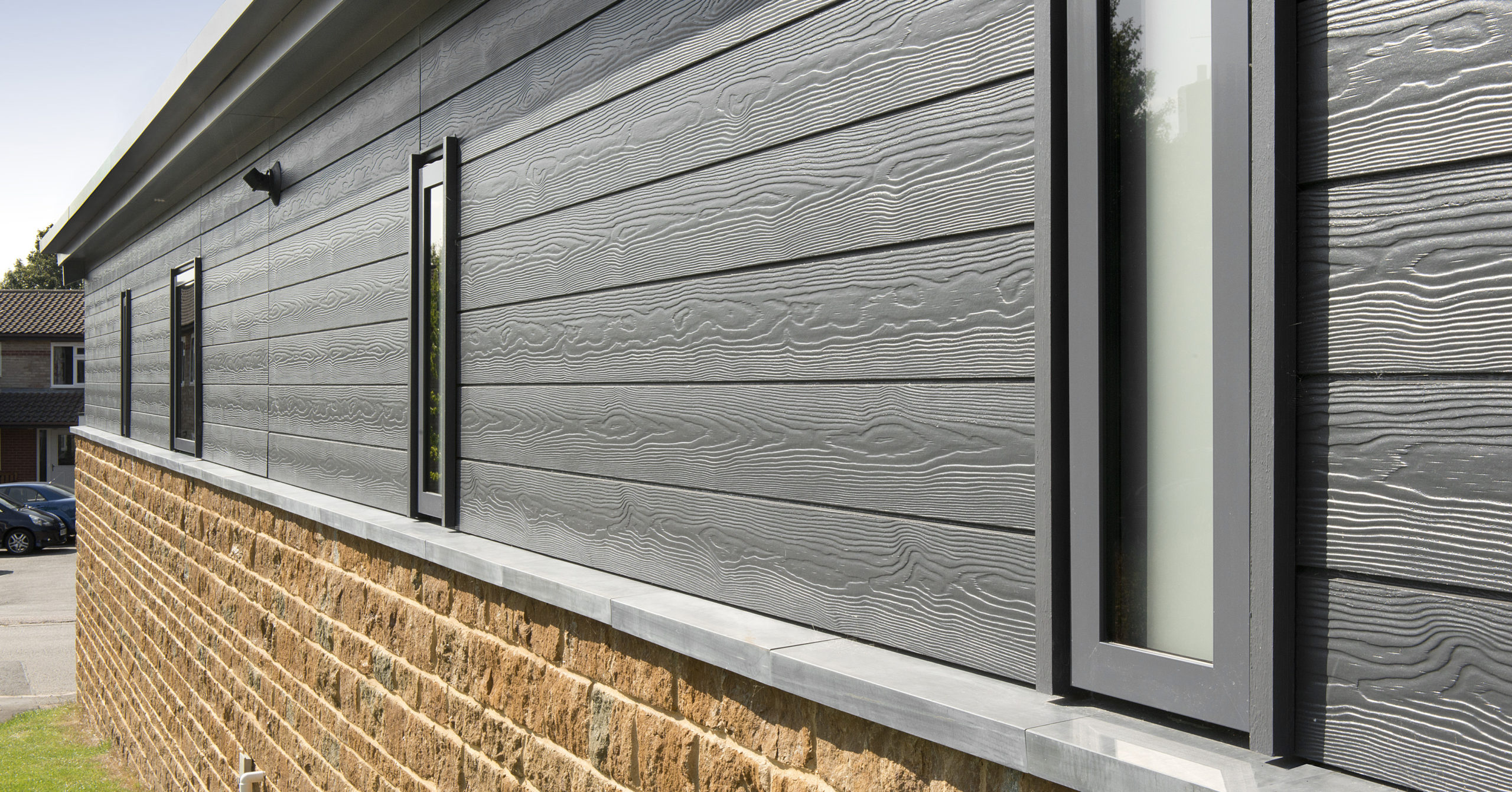Siding Replacement vs. Repair: Cost-Effective Choice?
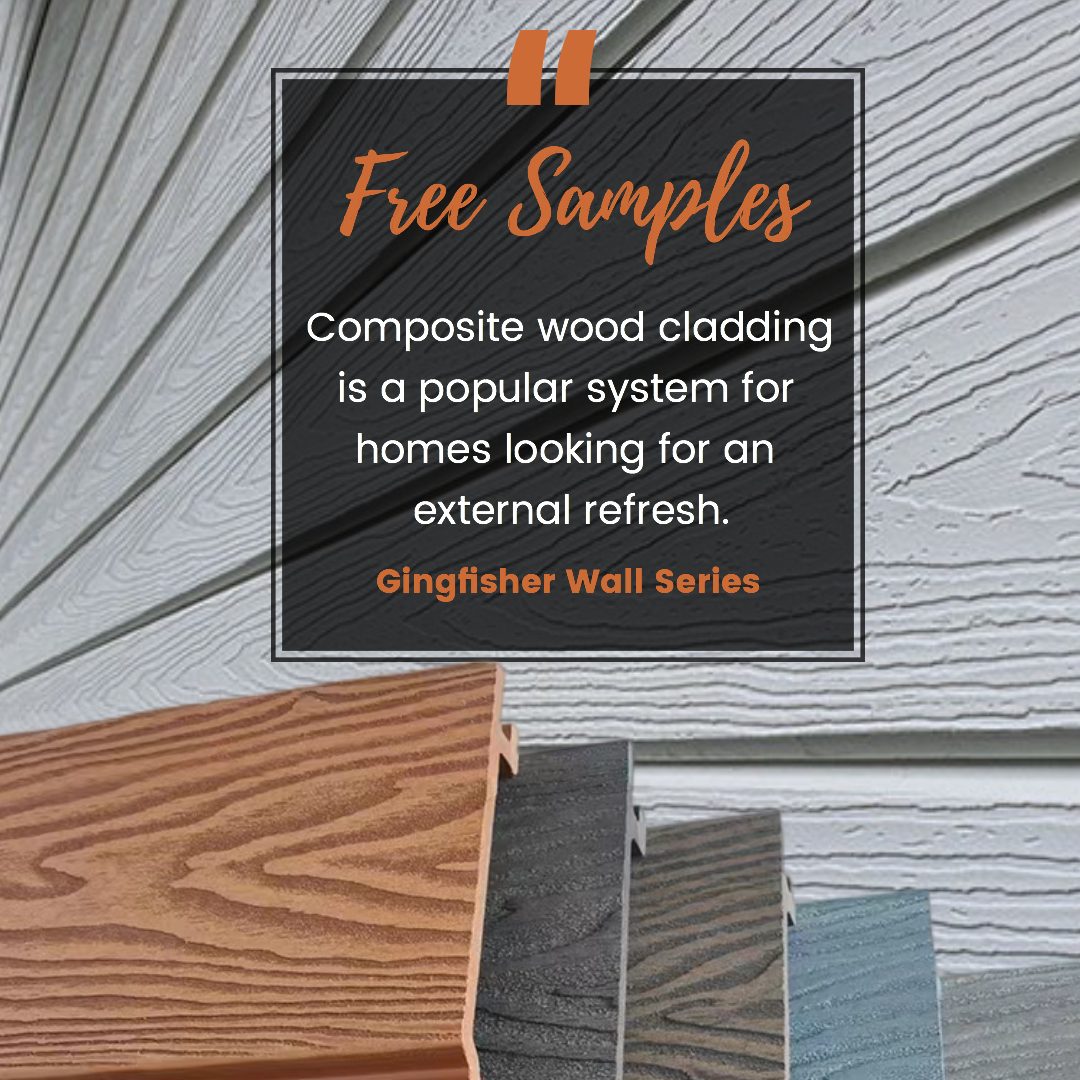
Siding Replacement vs. Repair: Which Is More Cost-Effective? This question is crucial for homeowners facing siding issues. Understanding the costs associated with repair versus full replacement is key to making a financially sound decision. This exploration will delve into the factors influencing this choice, from initial assessments of damage to long-term value and environmental considerations. We’ll examine various siding materials, labor costs, and the permitting process to help you make an informed choice that best suits your home and budget.
Initial Assessment of Siding Condition
Determining whether your siding needs repair or complete replacement begins with a thorough assessment of its condition. This involves a careful visual inspection to identify the extent and type of damage. Understanding the scope of the problem is crucial for making an informed and cost-effective decision.
A comprehensive evaluation considers several key factors influencing the siding’s lifespan and overall condition. This process allows for a precise determination of whether repairs will suffice or if a full replacement is necessary to protect your home’s structure and aesthetic appeal.
Visual Inspection Process
The visual inspection should cover the entire exterior of the house, systematically examining each section of siding. Start by looking for obvious signs of damage such as cracks, holes, loose or missing pieces, warping, and discoloration. Pay close attention to areas most exposed to the elements, such as corners, edges, and areas around windows and doors. Use binoculars or a ladder to reach higher areas for a closer inspection. Photographing the damage will provide a valuable record for future reference and discussions with contractors.
Factors to Consider During Siding Assessment
Before deciding on repair or replacement, several factors should be carefully considered. These factors will significantly impact the cost-effectiveness of each option.
- Age of the Siding: Older siding is more likely to have accumulated damage and may be nearing the end of its lifespan. For example, siding that is 20-30 years old may be more cost-effective to replace than to repair extensively.
- Siding Material: Different materials have varying lifespans and repair possibilities. Wood siding, for instance, may require more frequent maintenance and repairs than vinyl or fiber cement. The cost of repairing wood siding can quickly escalate compared to the cost of replacing it.
- Water Damage: Water intrusion can cause significant structural damage beyond the visible surface of the siding. Look for signs of water stains, rot, or mold, which indicate more extensive damage requiring potentially costly repairs or replacement.
- Insect Infestation: Wood-boring insects can weaken siding, creating structural vulnerabilities. The presence of insect holes or tunnels necessitates immediate attention, potentially requiring both repairs and preventative measures to avoid further damage.
- Extent of Damage: The number and severity of damaged areas are crucial. A few minor cracks or loose pieces may be easily repaired, whereas widespread damage or significant structural compromise often necessitates a full replacement.
Identifying Minor vs. Major Siding Issues
Differentiating between minor and major siding problems is essential for cost-effective decision-making. Minor issues, such as a few loose or cracked pieces of siding in an inconspicuous area, can typically be repaired at a relatively low cost. Major issues, on the other hand, often involve widespread damage, water intrusion, or structural compromise, making replacement a more financially sound option in the long run. For instance, extensive water damage leading to rot in multiple sections of the siding would likely be more costly to repair than to replace. Similarly, if a significant portion of the siding is damaged due to a storm, replacement is generally the more economical choice.
Cost Comparison
Determining whether siding repair or replacement is more cost-effective hinges on a careful assessment of the damage extent and the type of siding involved. While repair might seem cheaper initially, extensive damage often makes replacement the more financially sound long-term solution. This section details the cost differences between repair and replacement for various scenarios.
Repair Costs for Different Siding Damages
The cost of repairing siding damage varies significantly depending on the type and extent of the damage. Minor repairs, such as patching small holes or replacing a few damaged panels, can typically be completed for a relatively low cost. For instance, patching a small hole in vinyl siding might cost between $50 and $150, including materials and labor, while replacing a single damaged vinyl panel could range from $100 to $300. More extensive repairs, such as addressing water damage or significant impact damage, will naturally incur higher costs. Repairing wood siding often involves more complex procedures and specialized skills, potentially increasing the cost considerably. For example, repairing rotted wood siding might involve replacing entire sections, leading to costs ranging from $300 to $1000 or more depending on the size of the affected area and the cost of labor in the region.
Siding Replacement Costs by Siding Type
Siding replacement involves both material and labor costs. The type of siding significantly impacts the overall expense. Vinyl siding, a popular and relatively inexpensive option, typically ranges from $3 to $12 per square foot for materials, with labor costs adding another $3 to $8 per square foot. Fiber cement siding, known for its durability, is more expensive, with materials costing between $8 and $20 per square foot, and labor adding a similar amount. Wood siding, often the most expensive option, can range from $10 to $30 or more per square foot for materials, with labor costs reflecting the complexity of installation. These costs are estimates and can vary based on geographic location, labor rates, and the complexity of the job.
Cost Comparison: Repair vs. Replacement
The following table provides a comparison of estimated costs for repair versus replacement under various scenarios. These are estimates and actual costs can vary depending on several factors, including location, material choices, and the contractor’s rates.
| Scenario | Repair Cost Estimate | Replacement Cost Estimate | Recommended Action |
|---|---|---|---|
| Minor damage (e.g., a few small holes in vinyl siding) | $100 – $300 | $1500 – $4000 | Repair |
| Moderate damage (e.g., water damage affecting several panels) | $500 – $1500 | $2000 – $6000 | Evaluate carefully; Repair may be cost-effective if damage is localized. |
| Extensive damage (e.g., significant storm damage, widespread rot) | $1500 – $5000+ | $4000 – $12000+ | Replacement |
Factors Influencing Repair Decisions
The decision to repair or replace siding hinges on several factors beyond the initial cost comparison. A thorough evaluation of these factors is crucial to making a financially sound and long-term beneficial decision. Considering both immediate costs and potential future expenses is key to determining the most cost-effective approach.
Repairing siding can be a more economical option under specific circumstances. These situations often involve localized damage, allowing for targeted repairs instead of a complete overhaul. Furthermore, the sentimental value attached to older homes or unique siding materials can influence the decision to prioritize repair over replacement.
Cost-Effectiveness of Repair
Several factors can make siding repair a more cost-effective choice than complete replacement. Limited damage, such as a few damaged panels or minor cosmetic issues, often necessitates only localized repairs. This significantly reduces the labor and material costs associated with a full replacement. For example, repairing a small area of damaged vinyl siding due to a fallen branch might cost only a few hundred dollars, while replacing the entire siding could cost several thousand. Additionally, if the siding holds significant sentimental value—perhaps it’s a rare or historically significant material—repairing it may be preferred despite potentially higher short-term costs, as replacement would mean losing a unique feature of the home.
Long-Term Cost Implications of Repair
While repair may seem cheaper initially, choosing this route can lead to unforeseen long-term costs. A seemingly minor repair might mask underlying issues, such as water damage or structural problems. These hidden problems could eventually require more extensive and costly repairs, or even necessitate a full siding replacement down the line. For instance, neglecting to address water intrusion behind a repaired section of wood siding could lead to rot and infestation, resulting in far more extensive and expensive repairs later. This highlights the importance of a thorough initial assessment to identify and address all underlying issues before opting for repair.
Situations Where Repair Is Not Viable
There are instances where repair is simply not a practical or cost-effective solution. Extensive damage, such as that caused by a severe storm or years of neglect, often renders repair too costly or ineffective. In such cases, the cumulative cost of multiple repairs will likely exceed the cost of replacement. Similarly, if the siding material is outdated or no longer available, repair becomes impractical. For example, attempting to repair asbestos siding, due to its hazardous nature and the difficulty in sourcing replacement materials, would be far more costly and dangerous than a complete replacement with a safer, modern material. Furthermore, if the underlying structure of the home requires significant work, addressing those issues alongside siding repair will make replacement a more logical and efficient long-term solution.
Siding Materials and Their Lifespan
Choosing the right siding material significantly impacts both the initial cost and the long-term maintenance of your home’s exterior. Understanding the lifespan and maintenance requirements of various options is crucial for determining whether repair or replacement is the more cost-effective strategy. This section will explore the characteristics of common siding materials to aid in this decision-making process.
Vinyl Siding Lifespan and Maintenance
Vinyl siding is a popular choice due to its affordability and relatively low maintenance. It typically lasts between 20 and 40 years, depending on the quality of the product and exposure to harsh weather conditions. Maintenance primarily involves occasional cleaning with soap and water to remove dirt and debris. While generally durable, vinyl siding can be susceptible to damage from strong impacts or extreme temperature fluctuations, potentially requiring localized repairs rather than full replacement. A high-quality vinyl siding installation in a mild climate might easily last closer to 40 years, whereas a lower-grade installation in a harsh, sun-drenched climate might only reach 20 years.
Wood Siding Lifespan and Maintenance
Wood siding offers a classic aesthetic appeal but demands significantly more upkeep than vinyl. Its lifespan varies greatly depending on the type of wood, the quality of the paint or stain, and the climate. With proper maintenance, including regular repainting or restaining (every 3-5 years), and prompt attention to any signs of rot or insect infestation, wood siding can last 30-50 years or even longer. However, neglecting maintenance can drastically shorten its lifespan and lead to costly repairs. For example, cedar siding, known for its natural beauty and resistance to rot, might last 50 years with diligent care, while less durable woods might need replacing much sooner.
Fiber Cement Siding Lifespan and Maintenance
Fiber cement siding combines the durability of cement with the workability of wood. It boasts a long lifespan, typically ranging from 50 to 80 years, making it a highly cost-effective option in the long run. While more expensive upfront than vinyl, its longevity and minimal maintenance needs often outweigh the initial investment. Maintenance primarily involves occasional cleaning to remove dirt and algae. Fiber cement is also highly resistant to fire, insects, and rot, reducing the likelihood of costly repairs. A properly installed fiber cement siding system can easily outlast several vinyl or wood siding replacements, resulting in significant long-term savings.
Impact of Material Choice on Cost-Effectiveness
The choice of siding material significantly impacts the overall cost-effectiveness of repair versus replacement. Vinyl siding’s lower initial cost might make repair a more attractive option for minor damage. However, the shorter lifespan may lead to more frequent replacements compared to fiber cement, which, despite its higher upfront cost, offers superior longevity and reduces the frequency of extensive repairs or full replacements. Wood siding falls somewhere in between, requiring more maintenance and potentially more frequent repairs than fiber cement, but offering a more aesthetically pleasing, classic look than vinyl. The ultimate decision hinges on balancing initial costs, maintenance requirements, and the desired lifespan of the siding.
Labor Costs and Contractor Selection
Choosing between siding repair and replacement significantly impacts labor costs. The overall expense is heavily influenced by factors such as the project’s scope, the contractor’s experience, and geographic location. Understanding these variables is crucial for making an informed and cost-effective decision.
Labor costs for siding repair are generally lower than those for a complete replacement. Repairs typically involve localized work, such as patching damaged sections or replacing individual siding panels. Replacement, however, necessitates the removal of all existing siding, installation of new underlayment (if needed), and the complete application of new siding. This extensive process naturally translates to higher labor charges.
Geographic Variation in Labor Costs
Labor rates vary considerably depending on geographic location. Areas with a high cost of living, such as major metropolitan centers on the coasts, tend to have higher labor rates for contractors than smaller towns or rural areas in the Midwest. For example, a siding repair job costing $1,000 in a rural area might cost $1,500 or more in a large city due to differences in the contractor’s overhead and the prevailing wage rates for skilled labor. This difference is amplified for larger projects like full siding replacements.
Contractor Experience and its Impact on Cost
The experience level of the contractor also plays a significant role in determining labor costs. Highly experienced and reputable contractors often charge higher hourly or project rates than less experienced ones. However, this higher cost is often justified by their expertise, efficiency, and the likelihood of a higher-quality finished product. An experienced contractor might complete the job faster, minimizing labor hours and potentially resulting in cost savings despite a higher hourly rate. Conversely, inexperienced contractors may take longer, leading to increased labor costs even if their hourly rate is lower.
Obtaining Multiple Quotes from Reputable Contractors
It is essential to obtain at least three quotes from different reputable contractors before making a decision. This allows for a fair comparison of pricing and services. Comparing quotes should not solely focus on the lowest price, but also consider factors such as the contractor’s reputation, experience, licensing, and insurance coverage.
Evaluating Contractor Qualifications and Experience
Evaluating contractor qualifications involves several key steps. First, verify that the contractor is properly licensed and insured in your area. Check online reviews and testimonials from previous clients to gauge their reputation and the quality of their work. Request references and contact past clients to inquire about their experiences. Examine the contractor’s portfolio to assess their experience with similar projects. Finally, clarify the details of the contract, including payment schedules, warranties, and project timelines, to ensure transparency and protect your interests. A thorough evaluation of a contractor’s qualifications will help you choose the best option for your siding project, balancing cost and quality.
Permitting and Inspections
Obtaining the necessary permits and passing inspections are crucial steps in any siding repair or replacement project. These processes ensure the work meets local building codes and safety standards, protecting both the homeowner and the community. Failure to obtain permits can result in fines or even the need to undo completed work.
The permitting process for siding projects generally involves submitting an application to your local building department. This application typically requires detailed plans outlining the scope of the work, including the type of siding, materials used, and any structural modifications. The specific requirements vary by location, so it’s essential to contact your local building department early in the planning stages to understand their specific procedures and requirements. Some municipalities offer online portals for permit applications, simplifying the process.
Permit Application Requirements
The necessary documentation for a permit application can include detailed drawings, specifications of materials, and proof of contractor licensing and insurance. The application fee itself varies depending on the project’s size and complexity. For example, a small repair job might have a minimal fee, while a full-house siding replacement could incur a significantly higher fee. It is advisable to check the relevant website for the building department’s fee schedule. Additionally, some areas may require multiple permits depending on the extent of the work; for instance, a permit for structural repairs might be needed in conjunction with a siding permit if the underlying structure needs attention.
Inspection Costs and Potential Delays
Inspection costs are typically included in the overall permit fee, though some jurisdictions may charge separate fees for each inspection. The number of inspections required depends on the project’s complexity; a simple repair may only require one final inspection, whereas a large replacement project may involve several inspections at different stages of completion (e.g., after sheathing installation, before siding installation, and a final inspection upon completion). Delays can arise from various factors, including processing times at the building department, scheduling conflicts with inspectors, and the need for corrections identified during inspections. For example, a delay might occur if the inspector finds that the underlayment is improperly installed, requiring corrective work before the siding can be installed. In such cases, rescheduling the inspection can add several days or even weeks to the overall project timeline.
Warranty Considerations
Warranties play a crucial role in determining the long-term cost-effectiveness of siding repair versus replacement. Understanding the coverage offered by different manufacturers and installers is essential for making informed decisions. A comprehensive warranty can significantly reduce unexpected expenses down the line, potentially making repair a more financially sound option in certain circumstances.
Warranty coverage for siding materials and installation typically varies depending on the manufacturer and the installer. Material warranties generally cover defects in manufacturing, such as flaws in the material itself, while installation warranties cover issues resulting from improper workmanship. These warranties often specify a duration, usually ranging from several years to a couple of decades, and may include limitations or exclusions. For instance, a warranty might not cover damage caused by extreme weather events or improper maintenance.
Warranty Coverage Details
Material warranties often cover defects like cracking, peeling, or fading of the siding under normal use and weather conditions. Installation warranties typically cover issues such as leaks, improper flashing, or gaps that could lead to water damage. It is crucial to carefully review the specific terms and conditions of each warranty before making a decision. A common example is a 50-year warranty on vinyl siding for material defects, but only a 1-year warranty on the installation itself. This highlights the importance of choosing a reputable installer with a strong warranty offering. The warranty period should be considered in relation to the projected lifespan of the siding material; a shorter warranty period on a material with a long lifespan may not be ideal.
Impact of Warranty on Long-Term Cost-Effectiveness
The presence of a robust warranty can significantly impact long-term cost-effectiveness. A comprehensive warranty minimizes the risk of unexpected repair costs within the warranty period. For example, if siding develops defects within the warranty period, the manufacturer or installer may cover the cost of repair or replacement, saving the homeowner considerable expense. This reduces the overall cost of ownership over the siding’s lifespan. Conversely, a lack of warranty or a limited warranty can lead to substantial out-of-pocket expenses for repairs or premature replacement.
Warranty’s Influence on Repair vs. Replacement Decisions
Warranty terms can significantly influence the decision between siding repair and replacement. If extensive repairs are needed, but the siding is still under warranty, the manufacturer or installer might cover a substantial portion of the repair costs. This could make repair more cost-effective than a complete replacement. However, if the siding is beyond the warranty period, the cost of extensive repairs might outweigh the cost of replacement, especially if the replacement involves a material with a longer warranty and lifespan. For instance, repairing extensive water damage to older siding that is no longer under warranty may be more expensive than installing new, warranted siding.
Energy Efficiency Implications
Replacing or repairing your siding can significantly impact your home’s energy efficiency. While repair addresses immediate issues, a full replacement often offers more substantial long-term energy savings by improving insulation and reducing air leaks. This section will explore how different siding choices and installation practices affect your home’s energy performance and associated cost savings.
Improved insulation and reduced air leakage are the primary ways siding replacement enhances energy efficiency. Older siding, especially if damaged or poorly installed, can allow significant heat transfer during both summer and winter months. New siding, especially when coupled with proper underlayment and installation techniques, creates a more effective barrier against heat loss in winter and heat gain in summer. This reduction in heat transfer translates directly to lower energy bills and a more comfortable living environment.
Energy Savings from Improved Insulation and Reduced Energy Consumption
The potential cost savings from improved insulation and reduced energy consumption vary greatly depending on factors such as climate, home size, existing insulation levels, and the type of siding chosen. For example, a homeowner in a cold climate replacing old, leaky wood siding with well-insulated vinyl siding might see a reduction in heating costs of 15-25% annually. This translates to hundreds, or even thousands, of dollars saved over the lifespan of the new siding. Similarly, in a hot climate, replacing poorly insulated siding with reflective materials like certain types of fiber cement can significantly reduce cooling costs. These savings can be estimated using energy modeling software or by consulting with energy efficiency professionals who can assess your specific situation and provide tailored projections. For instance, the Department of Energy provides resources and tools to estimate potential energy savings based on various home improvements.
Factors Influencing the Energy-Saving Benefits of Different Siding Materials
Different siding materials offer varying levels of insulation and thermal resistance. This is often expressed as an R-value, which represents the material’s resistance to heat flow. Higher R-values indicate better insulation. For example, fiber cement siding generally offers better insulation than vinyl siding, although the difference may not always be significant. Furthermore, the installation method significantly impacts energy efficiency. Proper installation, including sealing gaps and cracks, is crucial to maximizing the energy-saving benefits of any siding material. The addition of an appropriate underlayment, such as rigid foam insulation, further enhances the thermal performance of the siding system, reducing air infiltration and improving overall insulation. Darker colored siding materials tend to absorb more heat than lighter colored ones, impacting energy consumption, especially in hot climates. Reflective siding materials can help mitigate this effect.
Environmental Impact
Choosing between siding repair and replacement involves considering the environmental consequences of each option. Repairing existing siding generally has a smaller environmental footprint than complete replacement, as it avoids the manufacturing, transportation, and disposal of new materials. However, the environmental impact also depends heavily on the materials used and their lifecycle.
The environmental impact of siding repair versus replacement is multifaceted, encompassing material production, transportation, installation, and eventual disposal. Repairing damaged sections minimizes waste and resource consumption compared to a full replacement, which necessitates the disposal of significant quantities of old siding. The choice of siding material further influences the overall environmental impact.
Siding Material Sustainability
Different siding materials possess varying degrees of sustainability. For example, wood siding, sourced from responsibly managed forests, can be a relatively sustainable option, particularly if treated with eco-friendly preservatives. However, the energy required for harvesting, processing, and transporting wood should be considered. Vinyl siding, while widely used due to its affordability and durability, is a petroleum-based product with a significant carbon footprint during manufacturing. Fiber cement siding, a composite material, often contains cement, which has its own environmental impacts related to manufacturing and transportation. Metal sidings, such as aluminum or steel, have varying degrees of recyclability and embodied energy depending on the manufacturing process and the percentage of recycled content. Finally, composite materials are available, often made from recycled materials, offering a more sustainable alternative. The sustainability of each material should be carefully weighed against its lifespan and performance characteristics.
Environmentally Friendly Siding Disposal
Proper disposal of old siding is crucial for minimizing environmental harm. Landfilling should be avoided whenever possible, as it contributes to greenhouse gas emissions and occupies valuable land. Recycling options exist for some siding materials, such as vinyl and aluminum. Many communities offer recycling programs for specific materials, or contractors may handle the responsible disposal of old siding. Some siding materials can be repurposed for other uses, reducing waste. For example, wood siding might be used in smaller construction projects or landscaping. Choosing a siding material with high recyclability or repurposing potential can significantly reduce the environmental impact of replacement projects.
Long-Term Value and Home Resale
The condition of your siding significantly impacts your home’s overall value and marketability. Potential buyers often judge a home’s condition based on its exterior, and outdated or damaged siding can detract significantly from curb appeal, leading to lower offers or a longer time on the market. Conversely, investing in high-quality siding replacement can be a smart financial decision, offering a substantial return on investment when it comes time to sell.
Siding replacement can significantly enhance a home’s curb appeal, making it more attractive to potential buyers. A fresh coat of siding can modernize the look of a home, instantly increasing its visual appeal. This improved aesthetic can lead to a higher asking price and a faster sale. Furthermore, the perceived quality and durability of the new siding contributes to the buyer’s confidence in the home’s overall condition and longevity. This confidence translates directly into a higher perceived value.
Impact of Siding Condition on Home Value
The state of your siding directly correlates with the perceived value of your home. Minor repairs might only slightly impact value, but extensive damage, such as rot, warping, or significant discoloration, can substantially decrease a home’s worth. Appraisers often consider siding condition during home valuations. For instance, a home with severely damaged siding might receive a lower appraisal than a comparable home with well-maintained siding, even if other features are identical. Real estate agents often advise homeowners to address significant siding issues before listing their properties to maximize their selling potential. A recent study by the National Association of Realtors showed that homes with updated exteriors, including new siding, sold for an average of 5% more than comparable homes with older siding.
Siding Replacement and Resale Value Enhancement
Investing in siding replacement can be a highly effective strategy for increasing your home’s resale value. The return on investment can be substantial, especially if the old siding was severely damaged or outdated. Choosing durable and aesthetically pleasing materials like fiber cement or vinyl siding can further enhance the perceived value. Buyers are often willing to pay a premium for homes that have been well-maintained and updated, and new siding is a clear indicator of this. For example, replacing outdated aluminum siding with modern, energy-efficient vinyl siding can significantly improve a home’s curb appeal and potentially add thousands of dollars to its sale price.
Balancing Cost-Effectiveness with Long-Term Home Value
When deciding between siding repair and replacement, it’s crucial to weigh the short-term costs against the long-term benefits. While repair might seem cheaper initially, extensive repairs can quickly accumulate, potentially exceeding the cost of a full replacement. Furthermore, repairing damaged siding might only offer a temporary fix, leading to further problems and expenses down the line. A comprehensive cost-benefit analysis should consider the lifespan of the chosen siding material, the potential increase in home value, and the overall cost of ownership over the next 10-20 years. In many cases, the long-term value enhancement resulting from a siding replacement significantly outweighs the higher upfront cost. Consider scenarios where significant repairs are required, such as addressing widespread water damage or rot. In these instances, the cost of extensive repairs might approach or even surpass the cost of complete replacement, making replacement the more financially sound decision.
Epilogue
Ultimately, the decision between siding repair and replacement hinges on a careful evaluation of several factors. While repair might seem like the cheaper option initially, a thorough assessment of the damage, material lifespan, and long-term costs is essential. By considering the factors discussed – including material costs, labor, energy efficiency, and environmental impact – homeowners can make an informed decision that balances immediate expenses with long-term value and sustainability. Remember to obtain multiple quotes from reputable contractors to ensure you’re getting the best possible price for the chosen solution.
